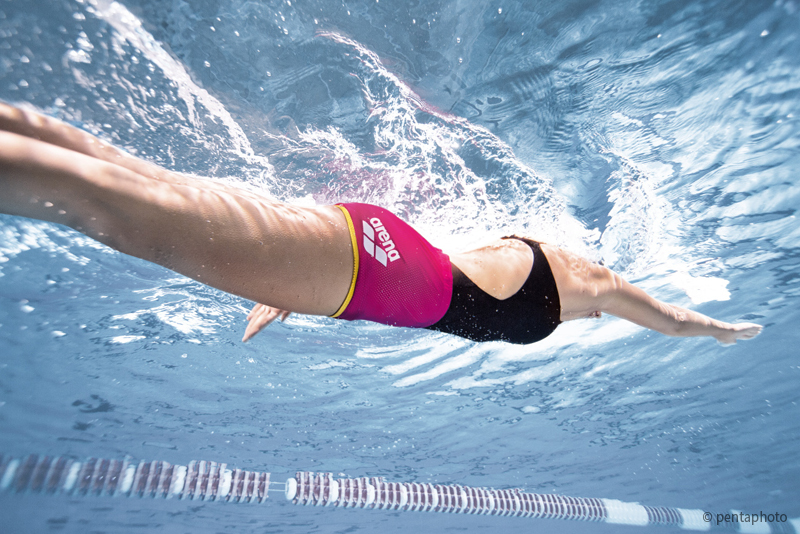Strength training is not easy. We have already seen a number of methods for developing strength both in and out of the water using various types of equipment. But it is one thing to do strength training in the gym and then make use of it in the water and another to actually do strength training in the water using resistances.
One of the most popular methods in modern-day swimming of developing and increasing your strength in the water is resistance training. These are training sessions performed during certain periods of the season using external resistances like, for example, T-shirts, ankle straps, water parachutes, rubber bands etc.
But be warned: this is an “invasive” training method, so it should be part of a gradual training plan starting with lighter loads under expert supervision.
Your first aim when beginning resistance training is to increase your strength out of the water, so that it can be applied in the water. Here is how we advise doing this:
- using TRX and circuit training to develop strength
- yoga and Pilates
Read these articles for more in-depth information:
Add Yoga to your swim workout!
TRX: improve your swimming performance by training like a Navy Seal!
Having started strength training out of the water, you can then gradually start incorporating strength drills in the water using resistances. We suggest beginning with resistances that are easy to use like, for example, a T-shirt or ankle straps.
You have two aims during this new training phase:
1. focusing on technique. The problem with resistances is that they alter your swimming technique and really highlight any flaws in your swim stroke.
2. swimming efficiency. Applying strength must go hand-in-hand with efficient swimming during drills.
This is summed up by the following simple equation:
technique <- resistance training -> efficiency
This can be achieved by:
- working on your ability to catch the water through technique/sculling drills
- begin swimming with light resistances to correct any flaws that might start to appear in your swim stroke
It is important for these drills to be aimed at the right kind of athlete or, in other words, expert swimmers, and they must also be properly incorporated in a yearly training plan. They can be performed 2 or 3 times-a-week, depending on your goal, and should last 30-45 minutes as part of a circuit or with a recovery swim between sets. Here is how to plan these sessions properly:
- from the base period to the specific period
- increasing your training volume on a weekly basis
- gradually decreasing the length of rests
- gradually increasing the amount of resistance
Finally, it is worth pointing out that resistance drills develop strength in various energy systems:
1. Aerobic strength
4×100 m freestyle with 20” recovery swimming in a t-shirt
4×100 m freestyle with 15” recovery swimming in a t-shirt
4×100 m freestyle with 10” recovery swimming in a t-shirt
200 m legs not wearing a t-shirt between the 4×100 m reps.
2. Anaerobic strength
1 x 100 m swum as follows:
- 1 x 25 m sprint with butterfly legs underwater using fins with 10” recovery (taking off the fins)
- 1 x 75 m sprint any stroke
1 x 200 m slow drills
1 x 100 m swum as follows:
- 1 x 75 m sprint any stroke with 20” recovery swum with fins wearing a t-shirt
- 1 x 25 m sprint any stroke wearing a t-shirt
1 x 200 m slow drills nots wearing a t-shirt
Repeat all of the above twice
3. Alactic strength
4 x 50 m with 30” recovery swum wearing fins and a t-shirt:
- 1x 25 m acceleration/25 m drills
- 1x 25 m sprint/25 m drills
- 1x 25 m with 15 m sprint and then drills
- 1x 25 m sculling on the spot for 5”-10” and then a sprint for 25 m/25 m drills
1 x 100 m easy swimming
Repeat twice
—————
